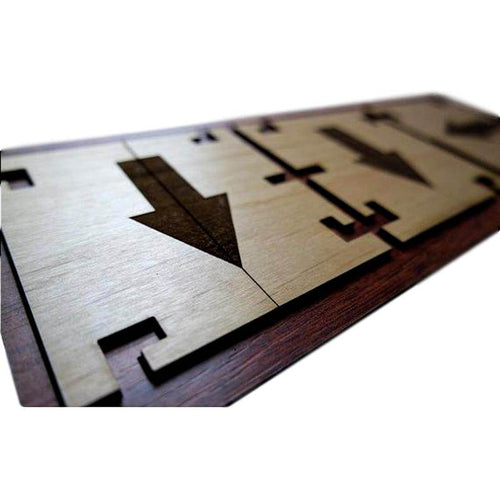Puzzles have a rich and fascinating history
Puzzles and brain teasers have captivated human minds for centuries, providing entertainment, intellectual stimulation, and a sense of accomplishment. From ancient civilizations to modern times, the history of puzzles is filled with intriguing stories, innovative designs, and cultural significance. In this blog post, we embark on a journey through time to explore the fascinating history of puzzles and brain teasers. We will delve into the origins of these mind-bending challenges, examine notable puzzles and puzzle creators throughout history, and uncover the enduring appeal of these timeless pastimes.
Ancient Beginnings:
The roots of puzzles and brain teasers can be traced back to ancient civilizations. The earliest known puzzle, the "Knot Puzzle," dates back to ancient China around 200 BC. It consisted of disentangling a series of knots, testing one's patience and problem-solving abilities. The Chinese also created tangram puzzles, which involved arranging geometric shapes to form specific designs. Similarly, the ancient Greeks introduced the world to the riddle of the Sphinx, a famous puzzle that demanded solving to gain entry to Thebes.
Puzzle Games in Medieval Times:
During the Middle Ages, puzzles and brain teasers took on a new form. The popular mechanical puzzle known as the "Puzzle Lock" (think of puzzle boxes) emerged, challenging individuals to unlock its hidden mechanisms. This type of puzzle often guarded valuable possessions and secrets. Additionally, the "Nine Men's Morris" game, a precursor to modern-day tic-tac-toe, became popular across Europe, testing players' strategic thinking and planning skills.
Puzzles and Enlightenment:
The Age of Enlightenment witnessed a surge in puzzle popularity. Renowned philosopher and mathematician Blaise Pascal contributed to the field with his invention of the "Pascaline," an early mechanical calculator. Pascal's calculator not only revolutionized mathematics but also presented a mechanical puzzle for users to solve. This device laid the foundation for future mechanical puzzles and complex problem-solving mechanisms.
The 19th Century Puzzle Boom:
The 19th century brought about a puzzle renaissance, with countless innovative creations and increased accessibility. Puzzles such as the "Puzzle Box" and "Sliding Block Puzzle" gained popularity, challenging individuals to unlock compartments or slide tiles to form complete images. This era also saw the rise of jigsaw puzzles, introduced by John Spilsbury in the 1760s. Jigsaw puzzles captivated enthusiasts, providing hours of entertainment and fostering creativity.
Puzzles in the Modern Era:
As the world entered the 20th century, puzzles and brain teasers continued to evolve. Mechanical puzzles like the "Rubik's Cube" became global sensations, captivating millions with their intricate designs and challenging mechanics. In the digital age, puzzles and brain teasers found new life in the form of video games and mobile apps. These platforms brought puzzles to a wider audience, enabling interactive experiences and fostering online puzzle communities.
The Enduring Appeal of Puzzles:
Why have puzzles and brain teasers persisted throughout history? The answer lies in their ability to engage and stimulate the human mind. Puzzles offer intellectual challenges, foster problem-solving skills, and promote cognitive development.
They can be enjoyed individually or as a group, fostering social interactions and teamwork. Furthermore, puzzles transcend cultural and linguistic barriers, making them universally appealing.
The history of puzzles and brain teasers is a testament to the enduring human fascination with intellectual challenges.
From ancient civilizations to the modern era, puzzles have entertained, educated, and stimulated the minds of countless individuals. Today, puzzles continue to evolve, embracing new technologies and captivating new generations.


0 comments